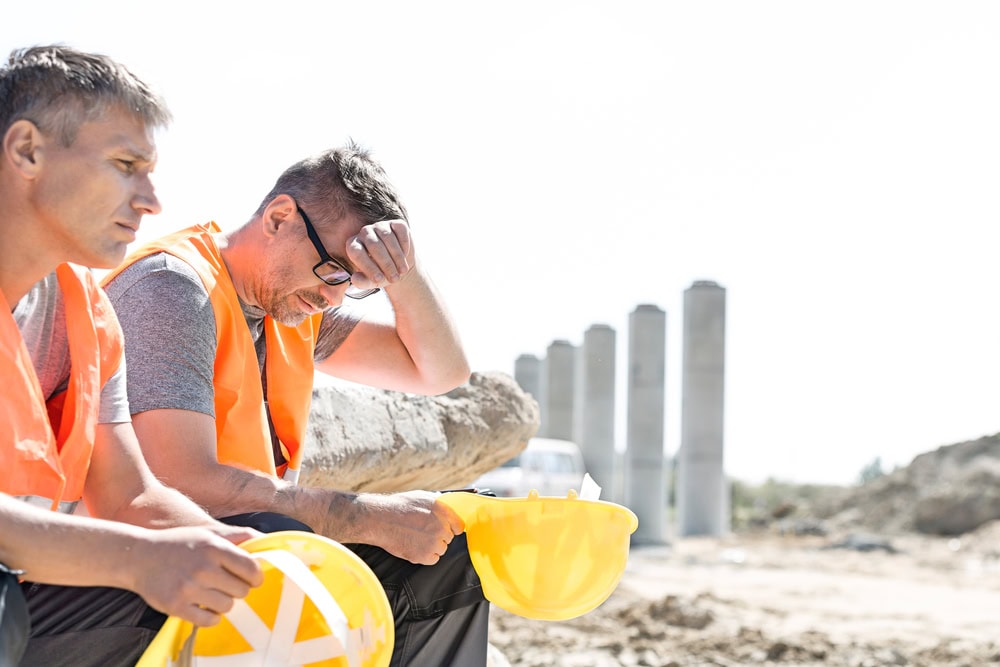Stress test coronavirus - what does the crisis manager say?
In an emergency, it becomes clear how resilient a company is. What lessons can be learned from the pandemic? An emergency and crisis manager in conversation.

As a crisis manager, you are more in demand than ever. Where is the shoe pinching companies?
Almut Eger, Emergency and Crisis Management, Management 4m2s: Many companies first had to learn how to act in this crisis situation. I perceive great uncertainty, especially among companies that are integrated into a network of suppliers and customers, including internationally.
Often, SMEs lack the know-how for the things that are of priority importance for the continuity of the company - business continuity management. This is because companies do not know what they really need to protect. In this regard, the following questions need to be answered: What are the expectations of customers, suppliers and employees, as well as financiers, during a crisis? What service, what products, what services can and must we still offer in an exceptional situation? Every company must consciously ask itself questions like these.
For example, a supplier of articles for daily use must flexibly adjust the transports: Which goods should now be delivered as a priority? Which customer is open and needs new toilet paper quickly, for example, even though it was only delivered the day before yesterday? Which carrier is still available? Which central warehouse can still be approached?
Which companies are well positioned?
Companies that have already dealt with the issue in advance of a crisis are clearly better equipped. Anyone who has run through the scenario "What processes, procedures and resources do we need in the event of an emergency?" knows how to act, because they have done important homework. I also know companies that will emerge economically stronger from the pandemic situation. And this is mainly because they have prepared themselves in advance for a crisis situation in general. The homework has been done, you can get out the documents and approach the whole matter much more calmly.
Is there a priority list of what needs to be done?
High on the priority list, for example, is team splitting. Wherever possible, redundant teams are organized so that one group is operational at all times. These teams should no longer physically meet. And if they do, very strict hygiene measures must be observed in the pandemic situation.
The priority list also includes various questions about the services required. For example, a company that installs critical security technology needs to ensure that its service technicians have the necessary spare parts and can maintain them at the customer's site. Think of critical infrastructure customers. Since some of the spare parts come from a central warehouse and may have to be flown in from abroad, the supply chain may well stop working. This means that in the event of a crisis, the company must quickly set up an ad hoc warehouse, as decentralized as possible. Those who have played through such scenarios in advance gain important time in the event of an emergency.
Another issue is the relocation of employees to the home office: Have I talked to the provider, does it even have enough bandwidth, and what about cyber security if everyone accesses the company network from home?
Such considerations belong in business continuity management. A company is only resilient if it can react relatively quickly in the event of a crisis.
What are the differences between a production company and a service company?
In production operations, the focus is very much on the supply chain: Where do we get the materials we need for processing and how can we deliver? But it is also important to answer the question of which products will still be in demand at all in the event of a pandemic. Have we ordered raw materials that we do not need at the moment? In manufacturing operations, it is often not possible to operate redundant sites; that would be far too expensive. That's why it's now so important to have enough employees and materials at this one location, even under difficult conditions. In one company example I know of, an initiative is underway to "set up small emergency warehouses" to temporarily store produced goods that cannot be delivered. In this SME, this is better from a business point of view than shutting down operations.
In the case of the service company, too, the primary question is in what form a particular service is needed in the current situation. For example: What service should be provided in public spaces? Does increased cleaning of door traps bring the hoped-for safety? Actually it does, but only in conjunction with hygienically correct behavior on the part of the people. Otherwise, a cleaned door handle will be contaminated again within minutes. That's why there is such a need for close consultation between the service provider and the customer, so that all measures for the best possible hygiene can be well coordinated.
On a positive note, companies are even coordinating with competitors. This goes so far as to help each other out with personnel in order to maintain the most important services.
What is the situation like for micro-enterprises with fewer than ten employees?
For a microenterprise, the question quickly arises as to whether the business has to be closed down completely, which would be absolutely fatal. Therefore, if one employee is infected, the entire workforce can hardly be sent into quarantine as a precaution. Here, one seeks the way to be able to strictly avoid all possibilities of infection. In addition, it is important to clarify with the main customers at a very early stage which services they urgently need and what can rather be postponed to the future.
The situation is somewhat different for critical infrastructures. Their services are central to ensuring that the economy and society continue to function.
Public transport, for example, is one of the critical infrastructures. It has a duty to transport people, even in the event of a pandemic. But how far does this obligation go? Because if this employer equips or protects all drivers sufficiently, it quickly runs into hundreds of thousands of francs - just for hygiene masks. This is where the cost-benefit issues come into play very quickly, if other protective measures could be just as effective. This is why, for example, the protection of the driving personnel was solved organizationally by keeping the front doors closed and interrupting direct contact with the passengers.
Energy suppliers are also part of the critical infrastructure and have to react quickly in crisis situations. If a large number of people work from home, electricity consumption may shift. You have to be able to cope with that. In this case, the energy supplier cannot afford a power outage. It has to be said that critical infrastructure companies have been quite well prepared for emergency scenarios for some time now.
The Confederation recommends the work "Pandemic Plan: Manual for operational preparation". Is this information sufficient for an SME?
It is a very good foundation. In Manual are the right questions that every organization must address. However, it is important that companies look further ahead: "As a company, we are dependent on numerous other partners in the event of a pandemic. What does that mean specifically, what do we need to know from the business partner in addition so that we can continue to function, at least partially?"
In times of coronavirus, is there a need for a pandemic team in the SME or should the normal crisis team take over this task?
My perception of this varies greatly. There are companies that have specifically deployed a pandemic team. As I mentioned at the beginning, the primary goal is to maintain services: People have to be protected in such a way that they can provide these services. And in many cases, the crisis team has been activated. Because the effective problems lie in the continuity of the enterprise, which is no longer secured because of the interrupted services. That is why a special crisis organization is appropriate.
I advocate a core team that forms a crisis or pandemic team. This is staffed with people from the three or four most important functions in the company. Depending on the organization, these are management of the main business, COO, HR, legal & compliance, IT, etc. And depending on the emergency - pandemic, fire, natural disaster, scandal, etc. - the core team is staffed with additional people.
The core team should understand each other blindly. The CEO and the board of directors tend not to be part of this team, but they have a good connection to it and also remain responsible for strategically important decisions that have to be made. Especially in difficult times, the CEO must be able to lead the company and have a calming effect on the workforce and customers. To do this, he needs time, which he would not have if he were too closely involved in the crisis team. The crisis team, on the other hand, manages the coordination of all measures. This is the best way to avoid operational hectic. Of course, the smaller the SME, the more the CEO is also involved in the work of the crisis team, but it should always be possible to adhere to this principle. After all, in a crisis situation, coordinated action and communication are essential so that customers and employees know exactly what is going on.
Do you advise one or the other company to use short-time work? When is this called for?
If you work with redundant teams, you think about who needs to be active in the company, when and where. Or formulated differently: What does the exceptional situation mean in terms of value creation, people, technology, organization and liquidity - the individual situation must be discussed under this aspect, also with regard to short-time work.
If you work in the tourism industry and have no more customers in the event of a pandemic, the case is clear. In this case, every hour invested is usually wasted. We also advise such a company, which, however, can rent its staff to a third-party company that urgently needs people. This allows the company to maintain its operations at a minimum level. In this case, this is better than short-time work or even than having to deposit the balance sheet.
At what point in time and how should communication take place in the event of a crisis?
We have had and are currently having many such discussions. The company needs a guideline on how and what is communicated. Ultimately, it is the managers who must implement this internally. The guideline should be based on the principle of openness, because there's no point in hiding anything, because sooner or later it will be discovered. And then the credibility is gone, internally as well as externally! But this does not mean that names of infected persons should be mentioned openly (consider protection of personality). It is the responsibility of the leaders to pay attention to this delicate point. For the reorganization of teams because of an illness, the name must be known within a limited scope.
How will it be communicated if production has to be stopped soon?
There is no general guideline for this, because situations are individual. But it helps a lot if I know what my business partners expect from me. In the current case, it's a balancing act: We don't want customers to drop out. So an employee has to contact them specifically and discuss the situation, how a delivery failure can be bridged mutually. In our experience, it's a good idea to talk to them in good time. This is appreciated. Every crisis situation should be tackled in a spirit of partnership, which usually leads to good new solutions that one might not have come up with on one's own.
Let's put ourselves in the position after the coronavirus. What should SMEs learn from it?
As I said, those who know their various contacts well and, in particular, know what they expect will be better able to cope with a crisis. After all, reputation is an important asset for the survival of a company - it is part of business continuity management.
After the pandemic is before the crisis: Whether well or less well positioned, it is important to work through a list of pending issues for after the crisis. Those who analyze will find out where problems arose in the organization, with resources (people and materials) or with customers, and so on, in the event of an emergency. From this, one can derive measures to be in a better position in the next case. In an emergency, the KKK principle - "know your heads in a crisis" - is and remains important.
Can you say where you think the federal government has done too little or even failed to date?
The federal government has been preparing for such a crisis for decades. It has a pandemic plan, resource planning, etc. But of course, because nothing happened for a long time, the red pencil was applied, projects were put on ice. This is now taking its toll here and there. We are a federal state, and the federal government can only tell companies to a very limited extent how to prepare for a crisis. There are company bosses who prepare their companies well for exceptional situations, and others say, "We manage in the here and now." These are different understandings of how to lead and how to deal with responsibility. Both must have a place in our economic and social system.









